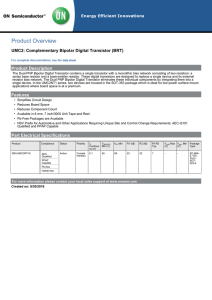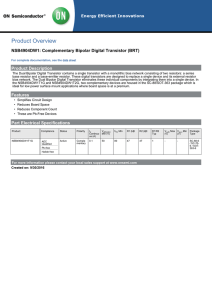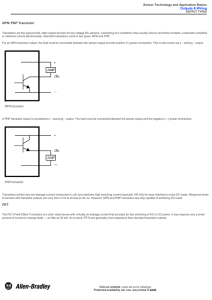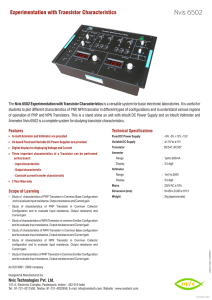Introduction to Transistors
advertisement
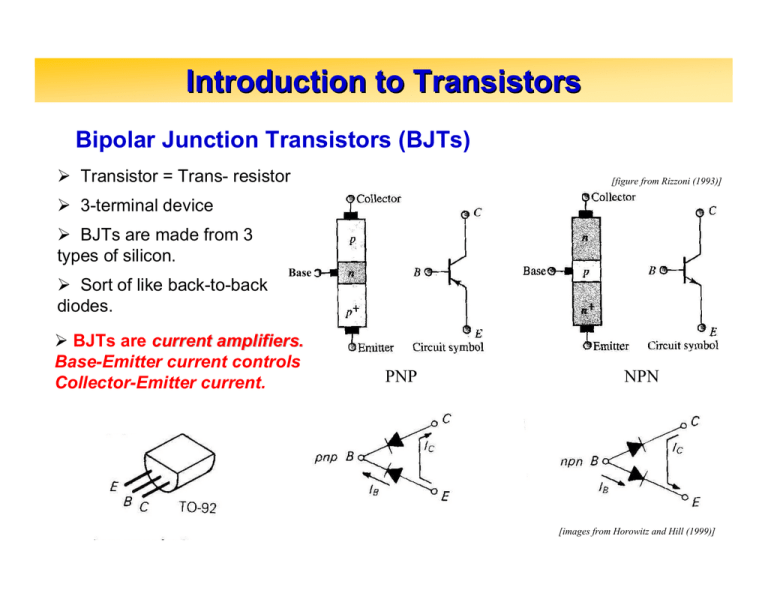
Introduction to Transistors Bipolar Junction Transistors (BJTs) ¾ Transistor = Trans- resistor [figure from Rizzoni (1993)] ¾ 3-terminal device ¾ BJTs are made from 3 types of silicon. ¾ Sort of like back-to-back diodes. Base ¾ BJTs are current amplifiers. Base-Emitter current controls Collector-Emitter current. PNP NPN [images from Horowitz and Hill (1999)] Basic Transistor Model (I) ¾ Conventional notation – Collector-emitter current (Ice) – Base-emitter current (Ibe) ¾ In a npn transistor – Base current flows to the emitter when Vb > Ve – Collector current flows to the emitter when Vc > Ve c Ice b Ibe e npn transistor Basic Transistor Model (II) “transistor rules” for an npn transistor to conduct current: 1. Vbe > 0 • Since this is a diode, normally Vbe ≈ 0.6V 2. Vbc < 0 • Since this is a back-biased diode, base current will normally flow to the emitter. • If Vbc > 0 then transistor goes into saturation. 3. Gain • Ice = βIbe • “β” or hfe is the gain - typical 100 ~ 200 • A BJT is a current amplifier c Ice=βIbe b Ibe e npn transistor Basic Transistor Model (III) c The “transistor rules” are reversed for pnp transistors: Æ The arrow on the emitter indicates the way current is supposed to flow. Ice=βIbe b Ibe e pnp transistor Design Note: Circuit performance should not to depend on β too much !!! ¾ β is NOT a constant. ¾ β depends on current, temperature, etc … ¾ β varies greatly from device to device Don’t Rely on β (hfe) From the 2N3904 NPN BJT spec sheet Lab Exercise 6-1 Set-up for Lab Exercise 6-1 Vcc = +10 V RL= 980 Ω A Rb VIN= +5 V A Ib Procedure: vary Rb, measure Ib and Ic Ic Lab Exercise 6-1 Lab Exercise 6-1 Use these data points to determine β Lab Exercise 6-1 ⟨slope⟩ = β = 177 ± 0.4% Lab Exercise 6-2 Design a current source based on the set-up of Lab Exercise 6-1. Assume β = 150, and determine Rb so that Ic = 10 mA. Æ You should be able to determine β roughly by measuring both Ib and Ic. Make sure to measure the voltage across RL as a cross-check. Æ Does your constant current source go into saturation when you expect it to (based on your estimate of β)?

